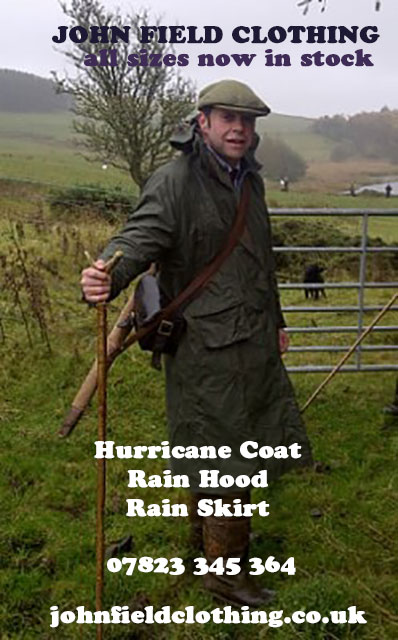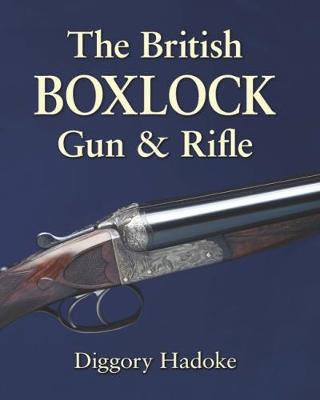Without anything remotely equivalent to the Shooting Times, The Field or Fieldsports journal available, it can be quite the quagmire for a foreign interloper to familiarise oneself with the shooting opportunities available in Ireland.
Google and Guns-On-Pegs also are rather light on Irish shooting content. Accordingly, it occurred to me to scour the catalogues of my favourite bookshop for anything relevant to game shooting in Ireland. Coch-Y-Bonddu Books tucked away in rural Wales is a wonderful resource, where I have ordered from on a near monthly basis since discovering the place. Unsurprisingly, I was able to pick up half a dozen second-hand books on Irish shooting sports and had them turn up at my door days later.
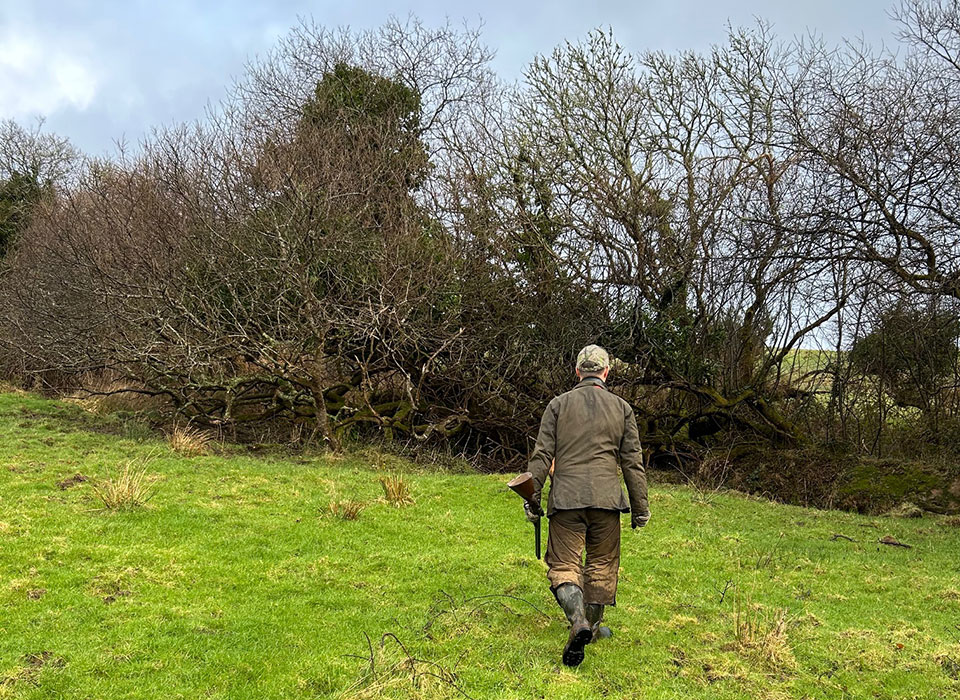
The small library I’d accumulated spanned relatively modern pieces on rough shooting in the 21st century through to some gorgeous Victorian novels from Payne-Gallwey pre-dating the partition of Ireland. After devouring the spoils of my book order one particular author stood out. The writings of Anglo-Irish sportsmen Captain J.B. Drought are some of the best literature on country sports in Ireland in my humble opinion. In particular, ‘A Sportsman Looks at Eire’ (1949) and ‘Green Memory of days with Gun and Rod’ (1937).
Captain J.B. Drought (born 1885) was an Anglo-Irish writer, known for his books on shooting and angling, including ‘A Shot in the Making’ and ‘Successful Shooting’ in addition to the Irish specific volumes noted above. Raised in Buckinghamshire, he joined Royal Irish Rifles (North Down Militia) and through his military career met the Knox Family of Mount Falcon Estate, County Mayo and married their daughter Olive. Through frequent visits to Mount Falcon he developed a love of fishing on the River Moy, shooting on the bogs and moors nearby and witing about his pursuits in both the form of both novels and for the Irish Independent.
To quote a favourite passage of his reflecting on a lifetime of sport, “One may be crippled by asthma or a martyr to gout; one may live a hundred miles away from moor and lough and river. Yet a long memory never fails to conjure up visions of the vanished past, none the less pleasant that many of them mirror failure rather than success. It is not the catches and the kills that we remember so much as the circumstances and surroundings in which they were made – these are the covers binding the stories of our sporting lives”.
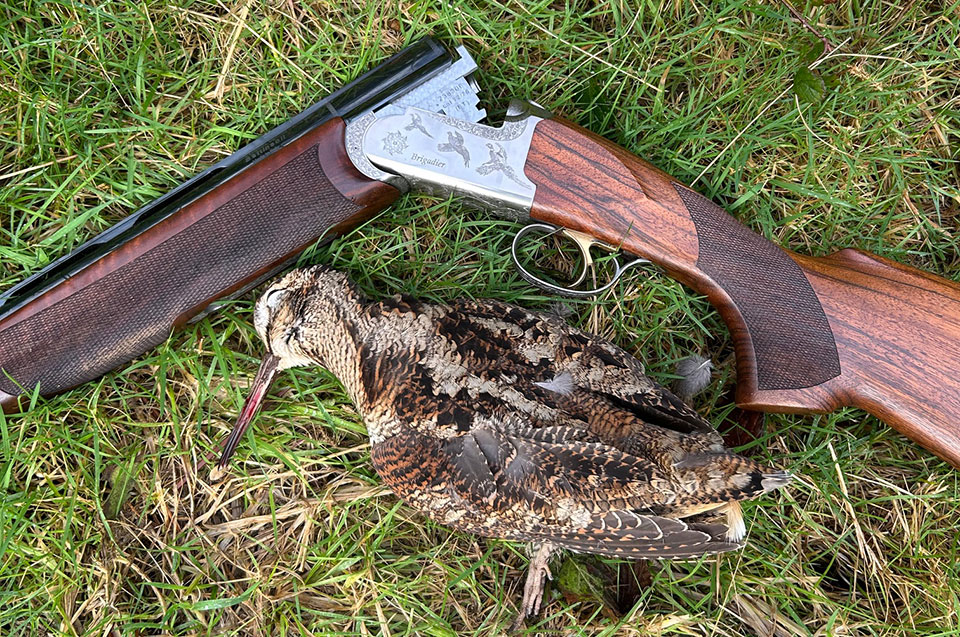
He had a wonderful way with words and a real talent for romanticising the rugged and often harsh landscapes of Ireland’s West. In his time the western reaches of Ireland were truly a world away from the well keepered countryside of southern England and provided wonderful sport in wild places for the hardiest sportsmen of that era. Written shortly before his death, ‘A Sportsman Looks at Eire’ offers a collection of stories reflecting on a lifetime that spanned incredible changes in Ireland, both sporting and political.
Suitably inspired by Captain Drought’s adventures I set my mind to how best to follow in his sporting footsteps. I am a newcomer to the enchanting sport of flyfishing, having only adopted it when my recent move to the Emerald Ilse made chasing pelagic species on the Great Barrier Reef a significantly longer commute. I did however find a wonderful fly fishing mentor in Ireland and can claim with pride to have fished the mayfly hatch on Lough Conn as Captain Drought did.
However, my spey casting simply is not up to standard, and nor are the salmon there anymore, for me to attempt to emulate Captain Drought’s salmon fishing exploits in the River Moy and surrounding systems. Subdivision of land, modern legal restrictions and a general public aversion to one traipsing across public land with 12 bore in hand have made it infinitely harder to wander the coastal bogs of Mayo wildfowling in the manor Captain Drought did a hundred years later.
Furthermore, most of the estates which once reared pheasants for driven shooting in the area surrounding Mount Falcon have not done so for decades. A good number of them irreparably damaged or abandoned in the tumultuous first few decades of the Irish Free State. Others such as Ashford castle are now luxurious hotels with little connection to their sporting past. However, in a landscape so changed since Captain Drought’s time, woodcock shooting stood out as a pastime that remains a strong as ever in modern Ireland.
With a full three month season, wide distribution and higher population numbers that in Great Britian and continental Europe, Ireland remains a mecca for Woodcock hunters. These stunning and elusive birds are particularly revered by the French and most Irish woodcock guides are fully booked out by French hunters between Christmas and the seasons end on the 31st of January.
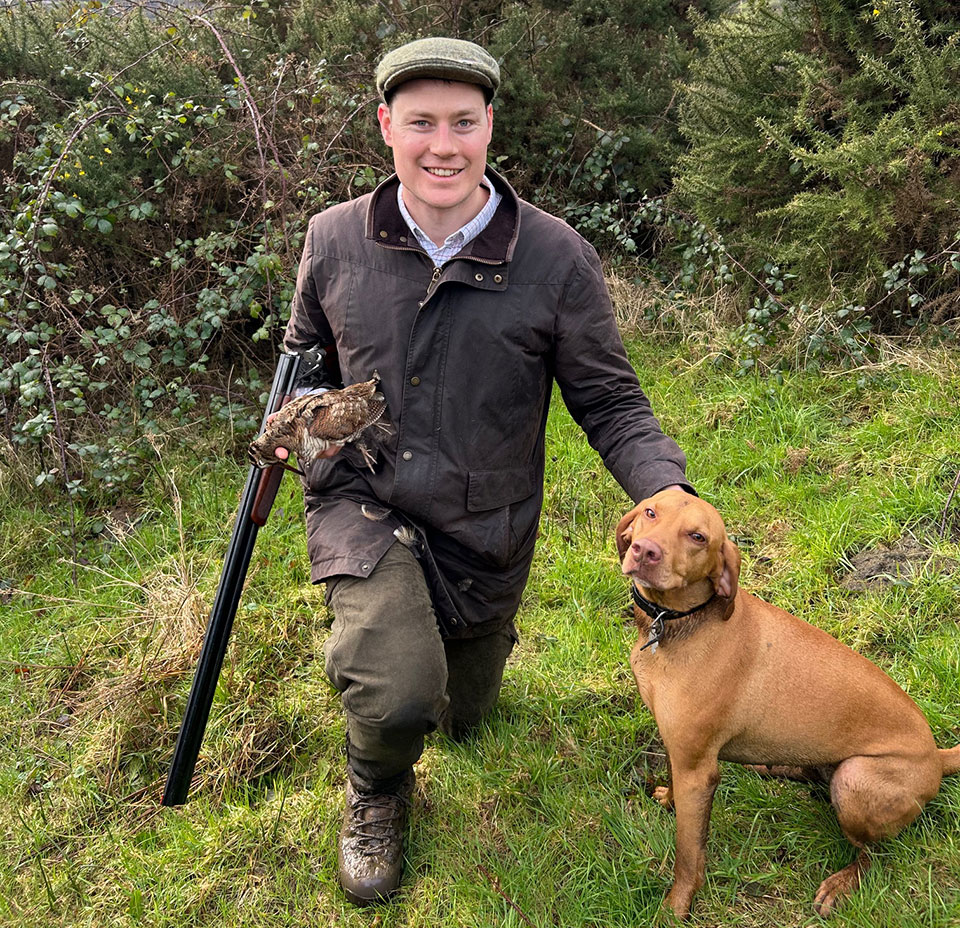
With no personal connection to Co Mayo and an absence of Woodcock shooting guides there, it was too much of an ask to pursue them where Captain Drought once did. However, a fly fishing mate residing in West Cork owned a lovely patch of shooting ground in his home county, had a well-trained pointer and was eager to help. Nick and I compared diaries and settled on the last weekend of January for our rendezvous with Ireland’s most enchanting gamebird.
Our weekend almost ended before it began thanks to the untimely arrival of storm Eowyn. With a red warning declared across the entirety of Ireland we battened down the hatches and prayed it would miss our shooting grounds. Our prayers were answered and whilst the northwest was battered, West Cork was barely touched and I had an excellent run down on the road as the only idiot inclined to drive four hours towards Sheep’s Head in the face of the storm. On arrival Nick and I shared a couple of hot toddys to ward of the January cold and hit the hay in the charming cottage he keeps in this isolated patch of Ireland.
The next morning after suitably fuelling ourselves with a full Irish and donning sufficient waterproofs to protect ourselves from the persistent drizzle we headed out to with farm with Luna the Viszla. Our grounds consisted of about 40 acres covering both sides of a valley bisected by a small stream. One side was a mix of green fields and forestry, the other rougher moorland and bog. Our pockets were filled with a mixture of No. 9 cartridges for the woodcock and snipe and No. 5 cartridges for any encounters with the wild black-neck pheasant.
Our first point of the day came in a patch of holly alongside the steam. My host was generous enough to focus on controlling Luna and offering me the best opportunity to take my first Irish woodcock. She stood transfixed at the base of the tree, tail quivering with excitement as Nick encouraged me to approach slowly behind her. Suddenly something small, brown and feathered flushed from the cover, I shouldered my Bettinsoli and Nick screamed ‘don’t shoot, it’s a hen pheasant’.
By the time he realised it was in fact a woodcock I’d unshouldered the shotgun and turned to him. For context, under Irish game laws hen pheasant are protected in order to try maintaining a greater stock of wild birds for local gun clubs.
Not put off, we continued up the far side of the stream to the rougher ground covered in brambles and gorse. During the course of our stroll we bumped several brown hares and a very healthy looking red fox who wasn’t stopping for a No. 9 cartridge directed at his rear end. At the crest of the hill Luna was again absolutely transfixed by a patch of cover on the fence line.
Nick shepherded me into what he thought was the most likely escape route for a flushed woodcock and then adopted his own position on the opposite side of the covert. With a sudden flash the woodcock burst from the cover heading left away from me. Over the crest of the hill we could see all the way down to the Atlantic ocean and the image of woodcock in flight over gorse against that backdrop was picture perfect. Snapping back to reality I shouldered my shotgun, swung through and past the bird, tightened my right index finger and watched it tumble definitively into the gorse. I let out an expletive laden whoop of joy and dashed forward to where the beautiful bird lay between the gorse.
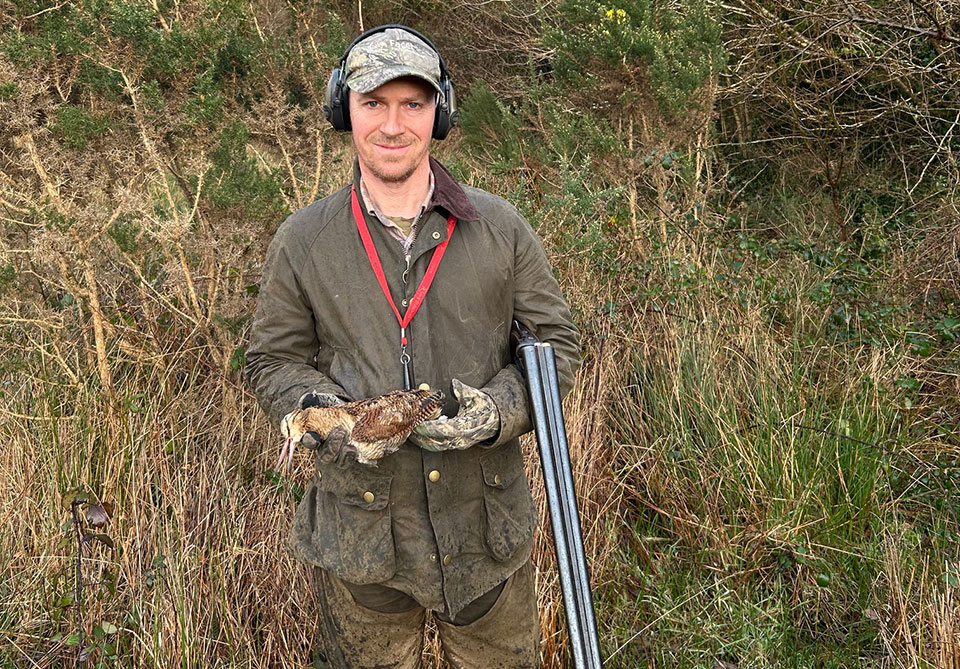
The first time one sees a woodcock one is taken aback by the beauty of it’s brown, white and tan feathered camouflage. It’s truly wild nature, distinctive beak and revered pin feathers again make it unique compared to other gamebirds. I spent several minutes admiring this incredible creature, reflecting on where it may have travelled from on its great winter migration and taking in the dramatic landscape around me.
Having read of Captain Drought’s similar experiences and then spent hours dreaming of them from the confines of my office in the city it was an incredibly special moment. Finally with a mixture of elation and melancholy I tucked the bird in the pocket of by Dubarry wax jacket and moved on with Nick in search of more.
Over the course of the day Nick and I took a handful of other woodcock, and missed an equal or greater number. We also saw a good number of snipe, but these always had the cunning to flush either too far away or in an unsafe position behind Luna. Finally, we encountered two of the wild black-neck pheasant, which for someone who has only ever seen the more common ring-neck were a fascinating sight.
Towards the end of the day a sudden and unexpected hailstorm had us diving for cover and chilled us to the bones. That was a cue to head for the cottage, dry off and then make our way to the pub.
As we warmed ourselves by the turf fire with a pint of Guinness in hand and reflected on the days sport it struck me how lucky I was. Very few Irishmen, let alone any Australian’s, will ever have the opportunity to hunt woodcock in such a wild and beautiful corner of the world. The day also proved once again that country sports have an incredible way of bringing people together.
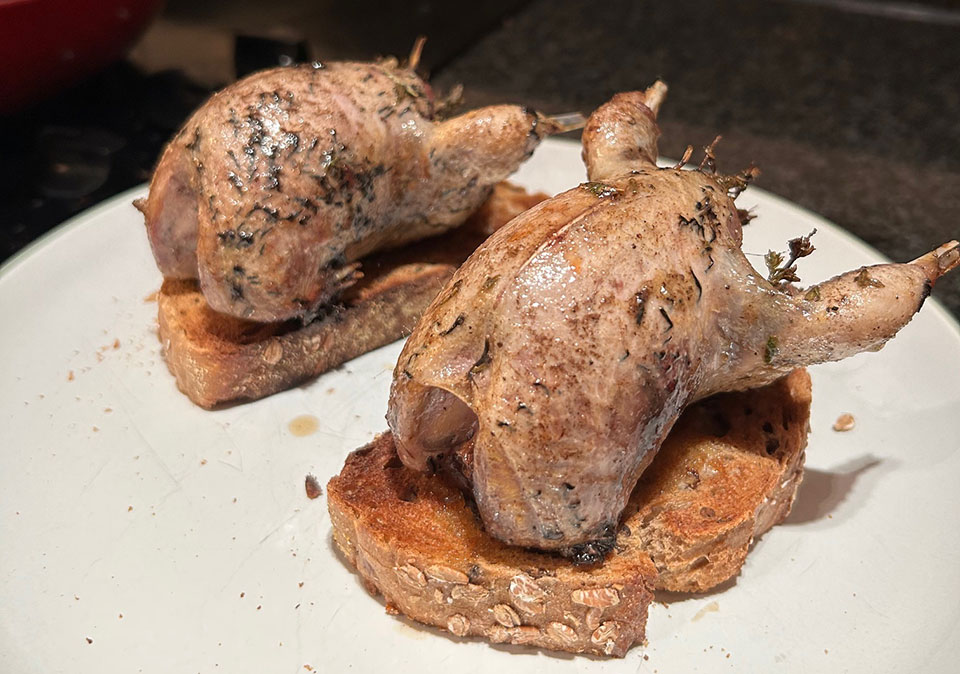
Nick, an Englishman nearly twenty years my elder, and I first met at an Army barracks outside Sydney. Our current setting couldn’t be further away, yet it’s the same shared passion that brought both us, and a hundred years prior Captain Drought, to this exact place.
Josh Gardner
Published by Vintage Guns Ltd on (modified )
